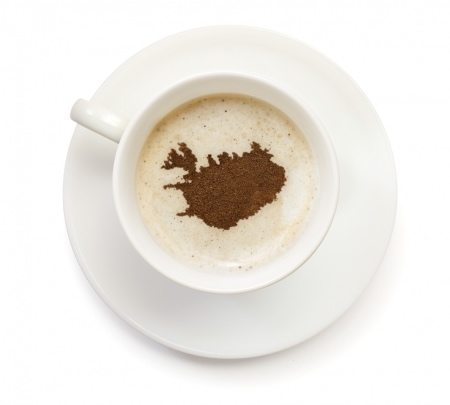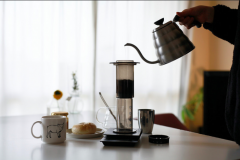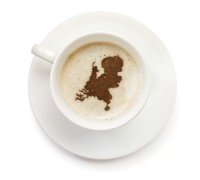Introduction of Coffee Origin-Asian "Sri Lanka, Bali, Yunnan, China"

Professional barista communication, please pay attention to coffee workshop (Weixin Official Accounts cafe_style)
Sri Lanka, formerly Ceylon.
"Sri Lanka black tea" and "Ceylon black tea" refer to the same thing.
In 1658, the Dutch cultivated coffee on Ceylon Island (present-day Sri Lanka), but it was not until the 19th century that coffee became economically viable.
At this time, Britain occupied Ceylon Island and carried out experimental planting of various cash crops. This was another excellent achievement obtained by Britain on the island after the successful trial planting in Jamaica.
In 1827, the abolition of slavery in western India led to a decline in coffee production, and Ceylon coffee duly filled the gap and gained a place in the coffee market.
Between 1830 and 1850, the coffee industry dominated Ceylon.
In 1841, the Ceylon Bank was established to facilitate the use of funds by coffee makers.
In addition, road and railway networks were established to transport coffee, and the government system became almost a vassal of the coffee industry.
In 1846, the world economy declined, coffee prices depressed, Ceylon financial collapse, the outbreak of turmoil, since the colonial government also decided to convert the original production of agricultural land into cultivation, such as coconut, cocoa and rubber.
Conflict often breaks out in the transition process. Food shortage also broke out at the end of the 19th century.
In 1869, Ceylon suffered a devastating outbreak of rust leaf disease. Within fifteen years, the disease had almost destroyed Ceylon's coffee industry, and the country was busy looking for alternative industries.
Later, tea trees were introduced from China, India, etc. Tea production began to replace coffee cultivation, tea gradually replaced coffee, becoming the most important export materials so far.
Today, Sri Lanka produces only a small amount of coffee, about 2,000 tons per year, with Robusta species accounting for the majority, and coffee beans are mainly sold for domestic consumption.
Bali, Indonesia.
In the same country island series, there are Sumatra, Sulawesi and Java and other well-known coffee producing areas. In contrast, Bali coffee is a bit abrupt.
Bali, a world-class tourist destination, is characterized by good wave quality, so tourism and surfing are thriving.
Bali is a small island, and the tourist benefits here are high…so how can anyone make this coffee?
Yes, but very few.
The coffee tree is characterized by the adoption of grafting and the development of a mixture of varieties for coffee propagation.
The term "grafting" refers to the grafting of scion branches onto carrier mother plants, allowing plants of two different species to heal, combine and become new individuals, belonging to asexual reproduction.
This method of reproduction is also common in Taiwan's fruit industry. Tomatoes, lotus seeds and mangoes are often produced in this way to dwarf them for easy picking and management, to avoid diseases and to strengthen their health.
As for the coffee tree grafting in Bali, it is a scion grafted from Arabica seed to Robusta seed.
I've had it, but I don't know if it's a gimmick or something.
My tasting experience is that the inferior feeling is more than other producing areas, but the feeling is not as attractive as Mantenin. A slight but single bitter taste, just to match the spread of yeast acid fragrance.
Maybe it's good, but it tastes weird. No comment.
As far as I know, the only green coffee beans that advertise the origin of Mount Quintamani are available, both solarized and wet-stripped.
Compared with other large producing areas in Indonesia, there are more defective beans, brown and yellow beans, less obvious flavor and more sour gas.
Bali coffee production is small, but there are many Bali coffee introductions on the Internet.
From the introduction of Bali coffee, you can know that there are several famous coffee factories here. The main production cooked beans, civet coffee and tourism factory use.
But it is not the manor, processing plant, etc. recognized by the current coffee producing area.
It's a sightseeing factory.
Yunnan coffee in China.
It was introduced around the 18th century. At present, the planting area accounts for more than 90% of the whole continent, mainly exported to Europe and America for raw material use.
With the development of fine coffee, the quality here is becoming more and more stable, and it is expected that the management system will be localized, computerized, and connected with the international futures market.
This means expecting to produce single-origin coffee as we know it, named after its origin.
Between 1998 and 2012, coffee production grew from 130,000 bags to 1.1 million bags, on par with Costa Rica.
Many coffee trading companies are interested in investing in this area, such as Wall Coffee and Starbucks.
The government has substantial plans for Yunnan coffee, and also has stable exchanges and support for the international market.
Although Yunnan coffee is not often seen in Taiwan today, it is still a source worth looking forward to.
When it comes to coffee production in China, it is difficult to introduce it logically from discussing other origins.
I think that in economically advanced countries, coffee production and agricultural projects tend to conform to the historical and overall cultural orientation of the country.
Economically advanced countries cannot rely on cash crops as their main export commodities.
Coffee is the world's second most economical beverage after water.
It is also the world's second largest trade commodity after oil
On the contrary, countries with advanced economies are also likely to play an important role in coffee culture.
At present, China's overall awareness of coffee origin is weak, so the difference between coffee in China, Yunnan and coffee in other countries is relatively weak.
Since the domestic cognition is not deep, Yunnan coffee faces more complicated problems in sales or brand than other countries. After all, China is also the birthplace of important tea culture.
Coffee culture and tea culture are equal.
Coffee appreciation is similar to tea tasting.
In China, the birthplace of tea culture,
How to integrate two cultures at the same time is the test of the current talent experience
Important Notice :
前街咖啡 FrontStreet Coffee has moved to new addredd:
FrontStreet Coffee Address: 315,Donghua East Road,GuangZhou
Tel:020 38364473
- Prev

Introduction of Coffee Origin-Asian "Laos, Thailand, Myanmar, Nepal"
Professional baristas Please follow the Coffee Workshop (Wechat official account cafe_style) as for Lao coffee produced in Laos, before the emergence of Europeans in Taiwan coffee enterprises, Lao coffee rarely appeared in Taiwan's raw bean trading system. However, the coffee culture in Laos also began before World War II. In 1927, 90% of the output of the Borofen volcano in Laos was exported to French businessmen and sold to Europe.
- Next

Introduction to the producing area of Coffee-Ethiopia in Africa
For professional baristas, please follow the coffee workshop (Wechat official account cafe_style) Ethiopia is the birthplace of coffee, which can start directly from the history of drinking. In 850, a shepherd in Ethiopia found that his goat became energetic after eating a certain fruit. When a group of hating couples learned that they ate it but felt very bitter and disappointed, they threw the picked fruit into
Related
- Detailed explanation of Jadeite planting Land in Panamanian Jadeite Manor introduction to the grading system of Jadeite competitive bidding, Red bid, Green bid and Rose Summer
- Story of Coffee planting in Brenka region of Costa Rica Stonehenge Manor anaerobic heavy honey treatment of flavor mouth
- What's on the barrel of Blue Mountain Coffee beans?
- Can American coffee also pull flowers? How to use hot American style to pull out a good-looking pattern?
- Can you make a cold extract with coffee beans? What is the right proportion for cold-extracted coffee formula?
- Indonesian PWN Gold Mandrine Coffee Origin Features Flavor How to Chong? Mandolin coffee is American.
- A brief introduction to the flavor characteristics of Brazilian yellow bourbon coffee beans
- What is the effect of different water quality on the flavor of cold-extracted coffee? What kind of water is best for brewing coffee?
- Why do you think of Rose Summer whenever you mention Panamanian coffee?
- Introduction to the characteristics of authentic blue mountain coffee bean producing areas? What is the CIB Coffee Authority in Jamaica?

